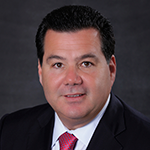After 40 years, Brian Woolf just wanted to enjoy his retirement. After training at Abraham & Strauss buying for Macy’s, and holding top jobs at Cache and The Limited, he had already been lured back to become a president at Lane Bryant. He left that job in 2012. Five months later, BodyCentral came calling.
It’s no secret that times are tough in the fashion and retail worlds, and Body Central tapped Woolf to turn the company around as its new CEO. When the board coaxed him out of retirement (for the second time), the Body Central franchise found itself in a less than favorable market situation. Shares had dropped dramatically, with company stock losing half its value, and revenue was down almost 10 percent. Woolf’s job is a big one. He’s come on board to reposition the young women’s apparel company as a true omni-channel retailer, build a new store prototype, transform retail strategy, align a fragmented customer base, and help Body Central expand across the country.
Woolf, who has worked in ladies apparel throughout his professional life, says it was Body Central’s framework and potential that convinced him to restart his career for a third time. The public company, at one time controlled by the founding family, is now controlled by its board of directors. Woolf knew his expertise could help. “I thought it was very exciting,” he says. “I wanted to understand what happened and analyze what went wrong to figure out how quickly it could be fixed.” After he looked at 290 locations—scattered mostly throughout the southeastern United States, Woolf determined the company could go national. That would mean 700 stores and a revenue target above $800 million.
While those numbers might seem overly ambitions for a struggling retailer, Woolf knew all the pieces were in place. “We had an entrepreneurial spirit that got Body Central to where it was,” he says. “But once you get to 300 stores, you have to change. We needed new systems and new strategies to turn things around, and I knew I could provide that.” Woolf started with upper management and recruited senior managers in most departments to strengthen the organization. With that team in place, he set a vision around three objectives: rebrand the company, create a new omni-channel shopping experience, and relate to customers in a new way.
First, physical locations would have to change. Old stores were “tired” and “black.” Woolf worked with designers and architects to design a new store concept that reflects Body Central’s exciting, sexy, and modern image. Clean lines, modern fixtures, and bright colors are the goal in remaking each Body Central location.
Perhaps the biggest change lies in creating a true omni-channel shopping experience. “We were basically running three different businesses where nothing was consistent,” Woolf explains. “We had different assortments and pricing in our stores, in our catalogues, and online. It was a big problem.” Additionally, 85 percent of the company’s marketing spend was driven to the catalogue, even though only 15 percent of its customers make book purchases. Woolf reversed that trend, sending a majority of funds to online and social media categories while aligning assortments and pricing across all channels.
As the company hits reset, Woolf knows marketing is crucial. “We can’t just change merchandise quickly, put everything on sale, and hope the customers react,” he says. “Customers have changed, and we’ve got to reach them in new ways.” While many retailers rely on discounts to drive traffic, Body Central believes the real key lies in great values offered by a company that understand the trends and sells the right assortment at the right time. “By providing huge sales, you just teach your customers to wait for big sale after big sale,” Woolf says. “Just putting things on sale is not going to work.” Instead, Body Central will mark down less product but provide a cleaner inventory with more emphasis on trend, fashion, and everyday value.
Although Body Central has underachieved, the strategies and talent are in place to turn business around. Woolf has narrowed SKUs by 38 percent and established a social media campaign anchored by 270,000 weekly text messages to help a reinvigorated eCommerce platform explode. “There are winners and losers in this game, and we can do better than what we’ve done in the past,” Woolf says. With most of the heavy lifting done, he expects to see traction in 2014 and beyond.

